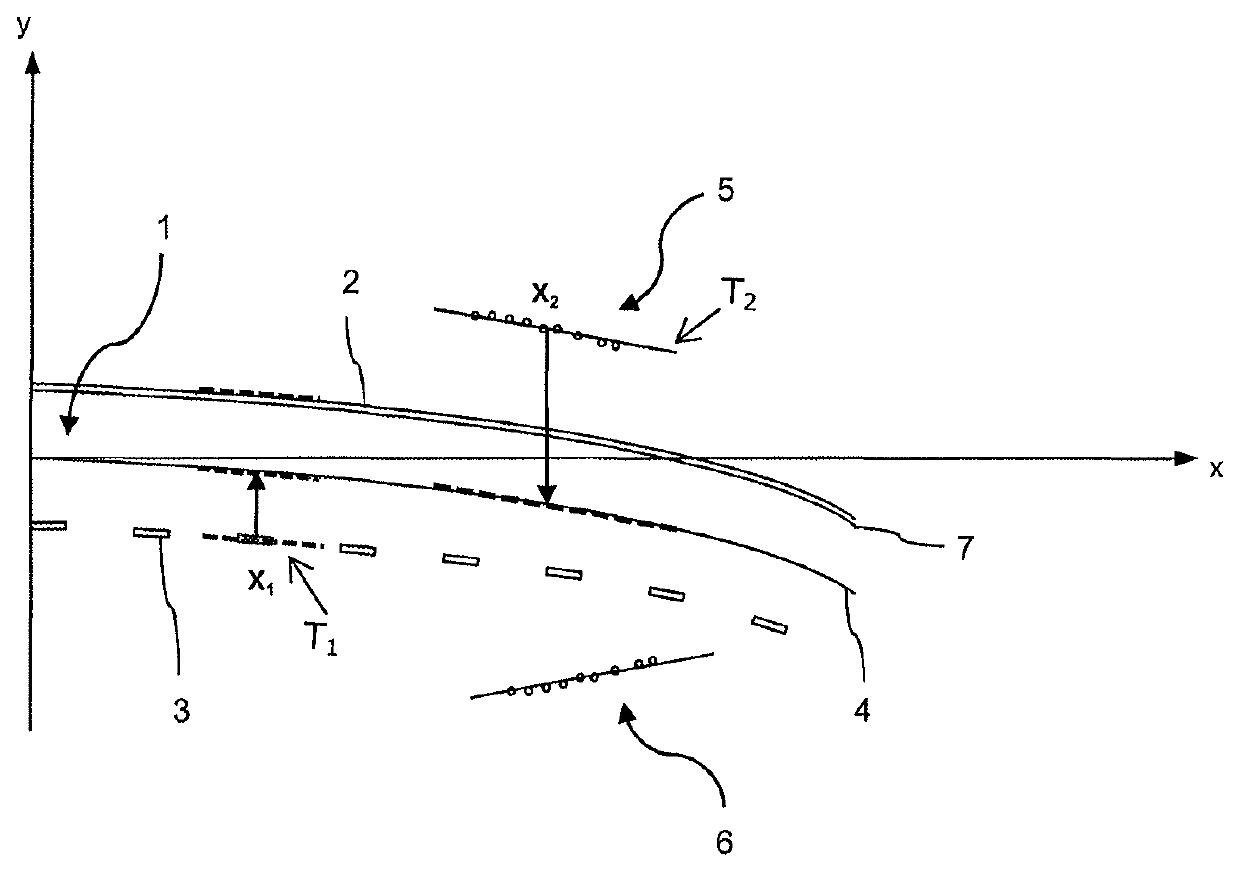Method for determining the course of the road for a motor vehicle
a technology for motor vehicles and roads, applied in traffic control systems, complex mathematical operations, computations using non-denominational number representations, etc., can solve problems such as long runtimes and model errors, and achieve the effects of reducing state space, being more robust and efficien
- Summary
- Abstract
- Description
- Claims
- Application Information
AI Technical Summary
Benefits of technology
Problems solved by technology
Method used
Image
Examples
Embodiment Construction
[0022]A surroundings sensor system that may be a camera, a radar or lidar sensor as well as a digital map with GPS (e.g., within a navigation system) provides sensor data for an evaluation unit by means of which the inventive method is carried out.
[0023]Said sensor data are used to carry out a feature extraction by the detection of structures that are parallel to the road, such as crash barriers, verges, lane markings, curbstones or other demarcating structures that are parallel to the road.
[0024]For example, an edge detection method is used to this end during video processing, by means of which method the contours of such structures that are parallel to the road can be detected, wherein an edge is regarded as a change of the gray-scale values, i.e., the gray-scale gradients are determined and evaluated by means of a Hough transform.
[0025]To this end, the sensor data are subdivided into search areas having surroundings-related horizontal and vertical boundaries, wherein the lane det...
PUM
 Login to View More
Login to View More Abstract
Description
Claims
Application Information
 Login to View More
Login to View More - R&D
- Intellectual Property
- Life Sciences
- Materials
- Tech Scout
- Unparalleled Data Quality
- Higher Quality Content
- 60% Fewer Hallucinations
Browse by: Latest US Patents, China's latest patents, Technical Efficacy Thesaurus, Application Domain, Technology Topic, Popular Technical Reports.
© 2025 PatSnap. All rights reserved.Legal|Privacy policy|Modern Slavery Act Transparency Statement|Sitemap|About US| Contact US: help@patsnap.com

